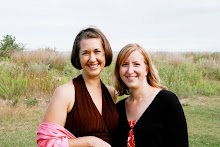Friday, August 10, 2012
Plucky Heroine and Gothic Creepiness? Yes, please.
CHARLOTTE MARKHAM AND THE HOUSE OF DARKLING by Michael Boccacino: Charlotte Markham is the widowed governess at Everton, home of the handsome widower Mr. Darrow and his two sons. When Nanny Prum is murdered, Charlotte takes on a greater role in the boys' lives. She reluctantly agrees to take the children through the fog to the mysterious House of Darkling, where their dead mother reads them strange bedtime stories and a host of mysterious creatures is revealed.
Charlotte is not simply a pawn in this game; she reasons out whether it's better for the children to see their mother or not, and she considers the complex reasons for her fascination with the House of Darkling. After all, she has lost family members, too; if Mrs. Darrow can reappear, why not Charlotte's parents or husband? The more she learns about this strange place, the more wary she becomes, until she finds herself in a contest of wills with the master of the House of Darkling, and if she is not equal to the challenge, more innocent humans will die.
Boccacino invokes a delightfully chilling air of Victorian Gothic creepiness throughout the novel, but what I enjoyed most was that he constantly surprised me. This is an homage to Victorian horror, but it is not constrained by those conventions; rather, Boccacino gives his boundless imagination free rein. The creatures we meet in The Ending, the land where the House of Darkling is situated, are extraordinary. For example: "It was about the same size and shape as a grapefruit, but before he could get a good look at it, he glanced up at me, clearly frightened, sensing that something was wrong. The fruit quivered, and with a wet, tearing sound it began to unroll from the inside out, the air laced with the scent of peaches as the thing in his hands untwisted its arms and legs from the pulpy interior of its body and wrenched its head free from it's shell. A baby's face blinked at us with pale blue eyes as Paul dropped it on the ground with a look of utter terror, backing away, his gaze transfixed on the thing as it fell onto its back, protected by what was formerly the leathery skin of the fruit." You don't see that every day, even in horror novels.
Charlotte herself is not a meek Victorian governess. That she is a widow sets her apart from the usual virginal girls in that role. Beyond that, she is conscious of her longing for Mr. Darrow and its impact on her decisions. Her formidable nature is hinted at in her discipline of two unruly boys: "'It's nothing to me if you want to kill one another,' I told them. 'I imagine that it would be much easier to care for one child as opposed to two. But I daresay your father would be furious with whichever one of you murders the other. If violence and murder are the methods you choose to use when dealing with family, then we can only surmise the tactics you might use when dealing with your peers would be that much worse. We would be forced to lock you away in the attic for the good of the village. I don't believe that such an existence would be a very pleasant one, but then it's not up to me to make your decisions for you.'" Her humor and assertiveness translate surprisingly well to a life-or-death struggle with otherworldly beings. I would have liked to have seen more of Charlotte's inner thoughts with regard to her dead husband and to Mr. Darrow. Her inclinations aren't very clearly drawn out; one moment, she wonders if her husband could come back from the dead, and the next she is daydreaming about the next Mrs. Darrow. It's a bit of a muddle, but the creepy atmosphere, snappy dialogue, and surprising otherworldly elements more than make up for this deficiency.
Highly recommended to any reader who enjoys creative horror or Victorian gothic settings.
Source disclosure: I received an e-galley courtesy of the publisher.
Subscribe to:
Post Comments (Atom)













No comments:
Post a Comment